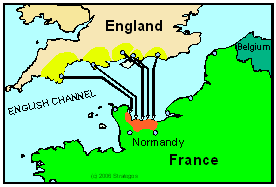Planning A Lean Implementation
Considerations for The Plan

Field Marshal
Helmuth von Moltke
No plan survives contact with the enemy.
Strategic Flexibility
Our knowledge, at this point is incomplete. Unexpected problems arise to change any plan. Unforeseen opportunities also arise. This is where master strategists excel. Rommel, for example, was successful in North Africa because he often deviated from plans to take advantage of unforeseen opportunities.
The only sure thing is change. Tasks in the near future are less likely to change than tasks months away. I suggest two plans:
A short term, detailed, rolling plan for 3-6 months
A long-term, general plan for 6-36 months.
The long-term plan sets direction and budgets. The short-term plan tracks specific tasks, activities and accomplishment. When problems and opportunities develop, these dual plans are easy to change.
Concentration
One of von Clausewitz' principles of war is concentration: concentrate the maximum force in the smallest area. Business strategy has a corresponding principle for a different reason.
Few individuals or organizations cope effectively with more than 2-3 high-priority objectives. As objectives multiply, efforts scatter and people flit from one task to another. Everything slows down and the work that is done is half-baked. Most importantly, new practices fail to become institutionalized.

Alexander Hamilton
Men often oppose a thing merely because they have had no agency in planning it, or because it may have been planned by those whom they dislike.
In developing an implementation plan, ensure that no more than 2-4 major initiatives occur simultaneously. In addition, particular individuals or groups should not be heavily involved in more than one or two of these objectives. Maintenance and Engineering are the groups that most frequently become overwhelmed.
Inclusiveness
It should go without saying that the planning group be inclusive. It should represent all functions, levels and viewpoints that will be effected or might have the ability to thwart theefforts.
Beachhead Strategies
If we attempt to implement and migrate one initiative at a time through a large company, results take forever. It is also difficult to sustain one initiative until the next arrives to reinforce it.
A beachhead strategy focuses on a small area or a product. All essential elements for a self-reinforcing, sustainable system are deployed, albeit locally. This can happen quickly. The small area becomes a beach-head of Lean Manufacturing. Others in the organization observe and learn from the beach-head. Gradually, one product and one area at a time, the beachhead expands.
D-Day, June 6, 1944

The Allied landing in Normandy was the largest amphibious invasion in history. Allied armies were greatly outnumbered by the Axis, particularly during the first few days. The Axis armies, however, were spread over thousands of miles of coastline. By concentrating the invasion on five small beaches, the Allies developed local superiority. Before the Axis could focus sufficient force on the landing grounds, the Allies had established a beachhead and had landed sufficient forces to defend it.
The Kaizen Blitz
The Kaizen Event (Blitz) is a focused implementation that suits a beachhead strategy. The blitz has strong appeal. It is fast, dramatic and effective. Kaizen events can implement workcells, SMED and 5S, in targeted areas, within a week.

However, use Kaizen Events with caution; there are significant dangers; among them are:
Kaizen Events are tactical, not strategic.
Kaizen requires experienced, knowledgeable and wise facilitators.
The learning in a blitz is often superficial.
Implementation Action Plan
With the elements, precedents, priorities and considerations identified, it is time to work out an action plan with tasks, assignments and costs.
■ ■ ■ ■ ■ ■ ■



